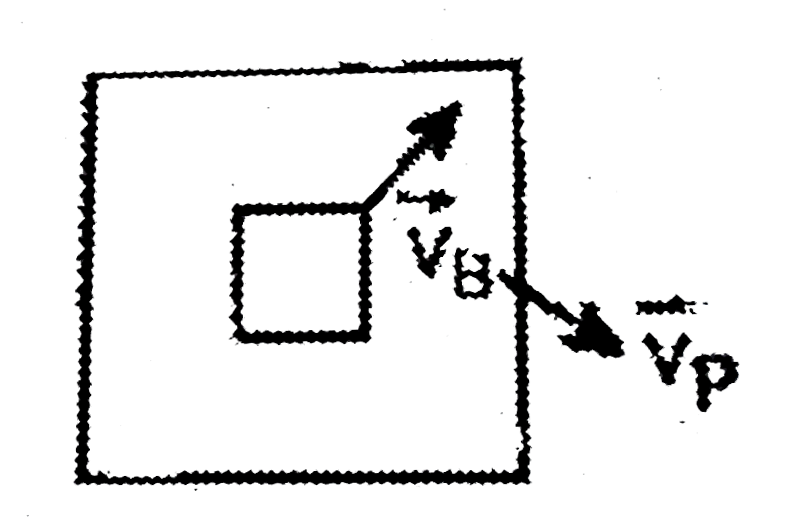Velocity and acceleration vectors of charged particle moving perpendicular to the direction of magnetic field at a given instant of time are →v=2ˆi+cˆj and →a=3ˆi+4ˆj respectively. Then that value of 'c' is
A
3
B
1.5
C
−1.5
D
−3
Video Solution
Text Solution
The correct Answer is:C
When a charged particle moves perpendicular to the magnetic field, it follows a circlular, path.
Here, force q(v×b) is perpendicular to v and is constant in magnitude, while particle moves on a circular path. On the circular path, its velocity (v) and acceleration (a) will be at right angle to each other.
Given v=2ˆi+cˆj,a=3ˆi+4ˆj
As, v and a are perpendicular, hence,
v⋅a=0(3ˆi+4ˆj)=0(2ˆi+cˆj).
⇒6+4c=0⇒c=−1.5
|
Updated on:21/07/2023
Topper's Solved these Questions
Similar Questions
Knowledge Check
- Question 1 - Select One
Velocity and acceleration vector of a charged particle moving in a magnetic field at some instant are →v=3ˆi+4ˆjand→a=2ˆi+xˆj. Select the correct options.
Ax=−1.5Bx=3CMagnetic field is along z-directionDKinetic energy of the particle is constant - Question 2 - Select One
If a vector →A=2ˆi=2ˆj+3ˆk, and →B=3ˆi=6ˆj+nˆk, are perpendicular to eachother tehn the value of 'n' is
A4B12C6D−6 - Question 3 - Select One
Velocity and acceleration of a particle at some instant of time are v=(3ˆi+4ˆj)ms−1 and a=−(6ˆi+8ˆj)ms−2 respectively. At the same instant particle is at origin. Maximum x-coordinate of particle will be
A1.5 mB0.75mC2.25mD4m
If →A=3ˆi−4ˆj and →B=−ˆi−4ˆj, calculate the direction of →A−→B.
View SolutionA unit vector in the direction of resultant vector of →A=−2ˆi+3ˆj+ˆkand→B=ˆi+2ˆj−4ˆk is
View SolutionA charged particle moves in a uniform magnetic field B=(2ˆi−3ˆj) T
View SolutionThe velociies of A and B are →vA=2ˆi+4ˆjand→vB=3ˆi−7ˆj , velocity of B as observed by A is
View SolutionIf →A=3ˆi+ˆj+2ˆk and →B=2ˆi−2ˆj+4ˆk, then value of ∣∣→A+→B∣∣ will be
View Solution


